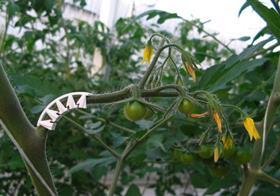
Australia is the driest continent in the world, and South Australia is the driest state in Australia. It’s a suitable setting for a new greenhouse system that may change the face of vegetable production globally.
In Port Augusta, not far from the state capital Adelaide, UK-based technology companySeawater Greenhousehas built its first commercial facility. Seawater Greenhouse is as it sounds – the company has developed a greenhouse system that purifies seawater for use on crops.
“Basically we try to mimic the natural process of the hydrological cycle,” Philipp Saumweber, Seawater Greenhouse’s managing director, told Fruitnet.com.
“We use seawater to cool the greenhouse with evaporative cooling. We heat up the seawater to a high temperature until it becomes steam, then we cool and condense it for fresh water.”
The system, which heats the seawater by running it in pipes over the roof, creates enough fresh water for crops inside the greenhouse, with enough left over for an external crop. Mr Saumweber said the setup produces 5l of water per square metre of greenhouse per day, on a yearly average.
With this initial commercial operation, the company is exploring strawberries, citrus and lettuce as options for external crops, and will grow truss tomatoes inside. The first crop will be ready for harvest in October. For growing purposes, the setup operates the same as any other greenhouse system, said Mr Saumweber, and can use either in-ground or hydroponic cultivation.
As a way of cutting down costs, Seawater Greenhouse’s concept makes enough sense for farmers already. Building the greenhouse itself is around 10 per cent cheaper than traditional greenhouses, according to the company, and daily operation costs are significantly lower. But in Australia – where water costs can amount to as much as a third of growers’ costs – the system has attracted significant interest.
One of the biggest savings with the Seawater Greenhouse system, said Mr Saumweber, is the decreased electricity requirement for pumps and fans. In traditional greenhouses, those requirements are usually powered by generators or mains electricity, but Seawater Greenhouse’s Port Augusta facility is powered by solar panels.
“In general a lot of farmers are getting squeezed because of rising input costs,” he said. “If can strip some of those out, especially fossil fuels, they’ll be in a better position. Water being a precious commodity here `in Australia`, if you make it free that’s also a major benefit.”
The Seawater Greenhouse facility in Port Augusta builds on three technology demonstration sites in Oman, Abu Dhabi and Tenerife in the Canary Islands, and Mr Saumweber hopes the company’s new commercial facility will attract other growers to the technology.
“Our site in Port Augusta is about 120ha, and we’ve got serious expansion plans for next year and the year after,” said Mr Saumweber. “`But` we’re fundamentally a technology company; our expertise isn’t in growing. Our plan for expansion is to invite other growers to use our technology and set up on our facility.”
Beyond the savings in water and power, the Seawater Greenhouse system opens up opportunities for fruit and vegetable production in areas that are generally considered unviable. The technology works best in hot, dry climates near the ocean or some other source of salt water – generally cheap real estate, as is the Port Augusta site.
Those conditions are not in short supply in Australia – Seawater Greenhouse has identified areas of opportunity along much of the country’s south coast and Western Australia. Mr Saumweber adds there are also plenty of opportunities globally, such as the Middle East, Africa and South Asia.
“There are places in India and Pakistan that look fantastic,” he said. “India is fantastic in Gujarat. That would be a great location if the technology works there in an economic sense. We’ve done some rough calculations `for that`, and it looks OK.”
Apart from using fallow ground, Mr Saumweber said the system also has a revegetative effect on surrounding land.
“The other point is that for every litre of water used in-house, we evaporate about 9 litres into the atmosphere. As we’re bringing seawater into our system, it also goes into atmosphere, which means it rains more somewhere. In our pilot projects, there was a lot of revegetation happening around the system.”






No comments yet